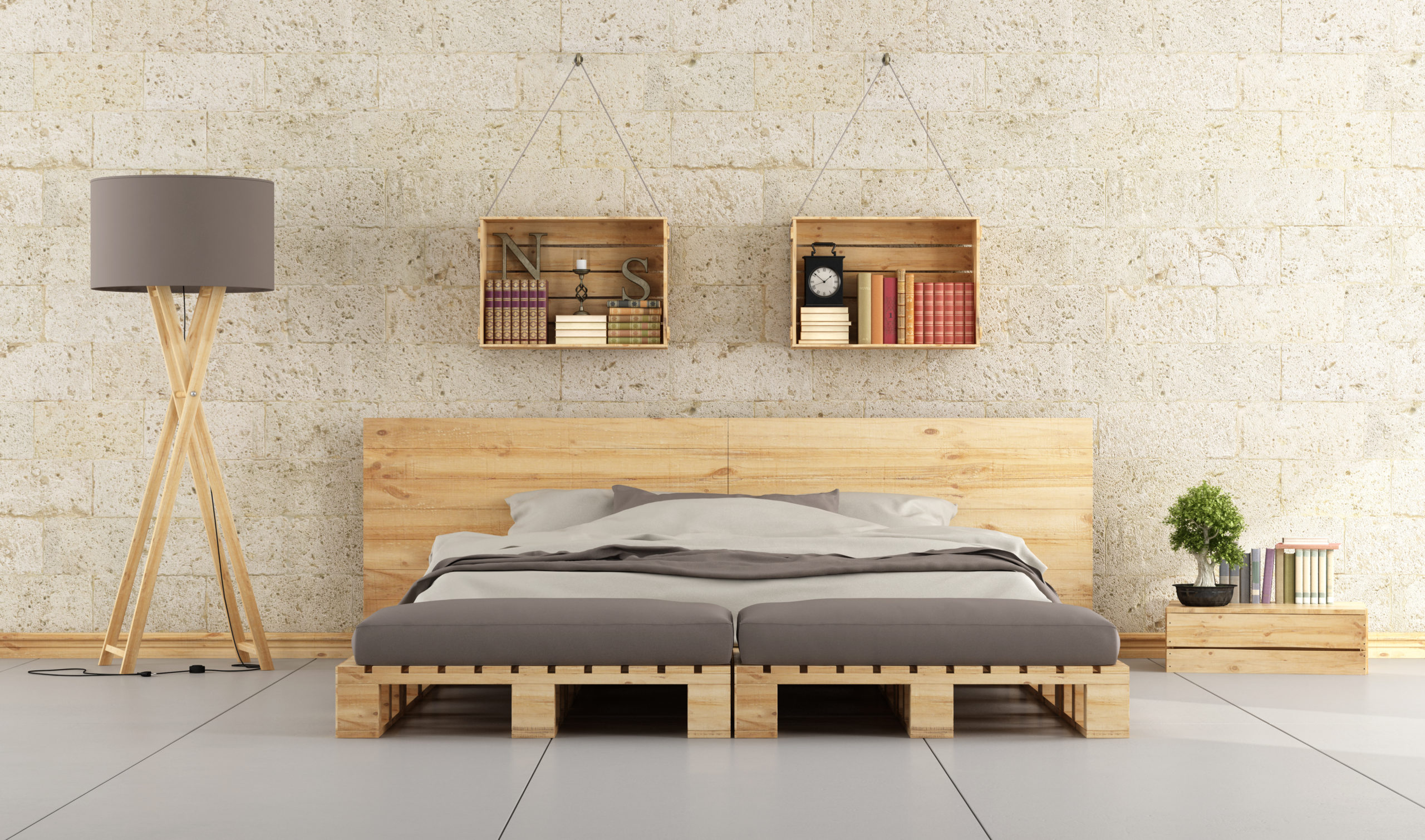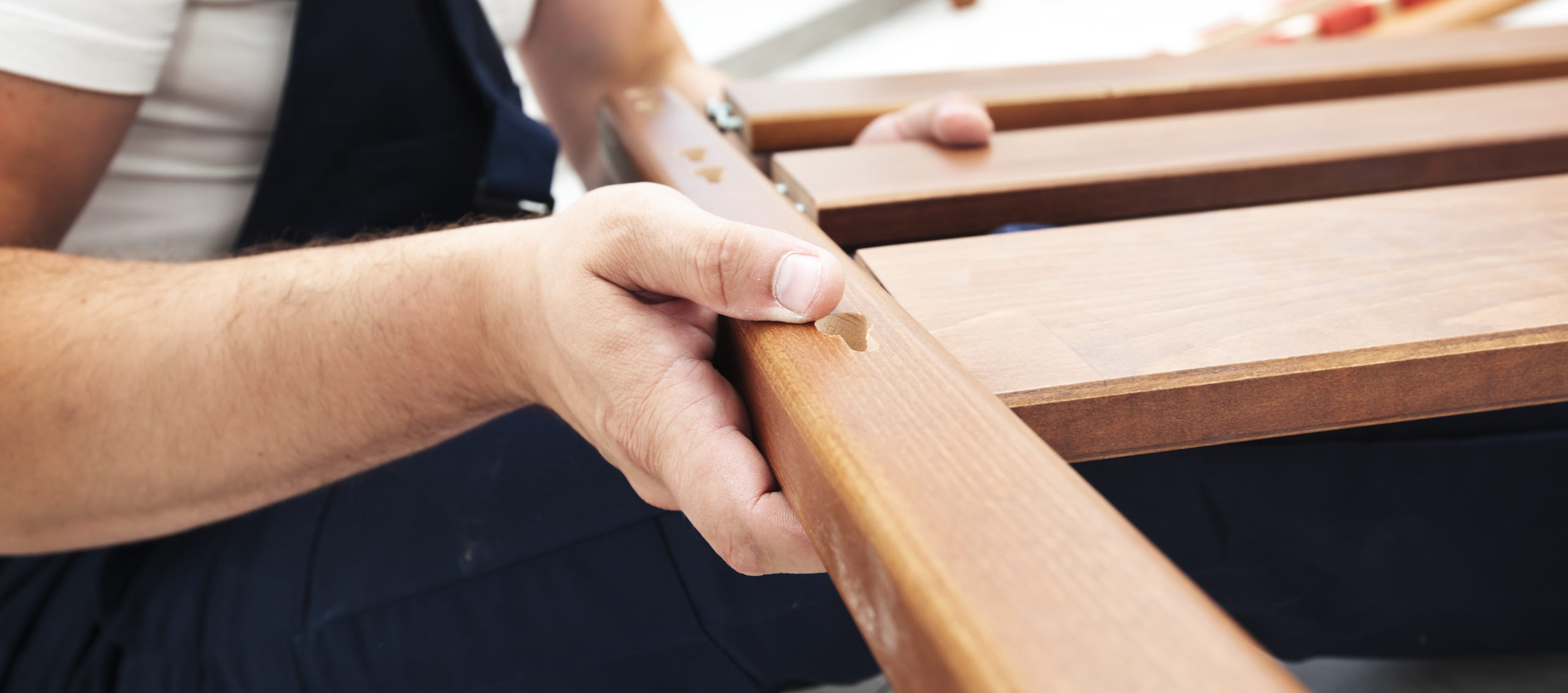
Wooden bed frames and bases are always a classy option. Not just because they are stable and durable, but because they have that extra stylish touch. So you know what you want, but what is the best wood for beds? We have your guide to materials covered here.
A wooden blend is a perfect combination of nature and modern design. Whatever your home decor and sleeping needs may be, wood has you covered.
You can choose between different choices ranging from oak, maple, pine, mahogany, walnut and more. Wooden bed frames are also available in multiple color and style options.
While other types of bed frames need to be used with a solid foundation or box spring, most wooden bed frames come with integrated slats that can provide sufficient support for the mattress on their own.
Sometimes, wooden bed frame designs come with a headboard, built-in drawers and a footboard.
Before purchasing a wooden bed frame, you need to consider several factors.
Wood Classification
Wood for bed frames can be classified into several categories based on size, grade, level of dress and type.
Wood is typically cut into 2-foot long multiples with widths ranging from 2 to 16 inches. As the thickness or width of the wood changes, so does the name of the wood.
Typically, wood with less than 2 inches of thickness is called a board, while those between 2 to 5 inches are called lumber. Any wood with thickness above 5 inches is called timber.
Wood is graded on a scale of 1 to 5, with grades 1 and 2 as the highest grades typically used in construction and furniture making. When choosing wood for your bed, they should fall between grades 1 and 2.
Grade 3 is typically lower quality and sometimes appears to be already splitting, making them unsuitable for sturdy furniture like beds.
The worst quality is grade 5 wood. If you’re not working on throwaway projects, you should generally avoid this type of wood.
Based on the level of dressing, wood can be classified into rough wood, dressed wood and worked wood.
Rough wood has been cut to specific sizes but hasn’t had any other work done. For example, the wood may not be smoothed, and the edges may not be perfectly uniform.
Dressed wood has been trimmed and uniformly smoothed, while worked wood has been completely prepared for immediate use.
There are two major types of wood: hardwood and softwood.
Differences Between Soft and Hardwood
When it comes to building and interior decorating, hardwood and softwoods have multiple functions. Each wood is best suited for particular projects, as there are notable differences between both types of wood.
Hardwood
This type of wood comes from flowering plants, also known as angiosperms, and offers more strength and durability. Common types of hardwood include birch, oak and maple.
These trees grow slower and require a longer period to dry. Most hardwood is used for projects that require durability, as they have a higher density than softwood and are typically more expensive.
They are easier to carve into and manipulate, making them preferable for projects requiring a sturdy frame or intricate design.
Softwood
Softwood comes from trees that belong to the gymnosperm family. These types of trees are typically known to have cones and needles. Softwoods have a lower density than hardwoods and are mainly used for furniture and building components.
This type of wood is sourced from wood that grows fast and is less expensive than softwood, making it a perfect choice if you’re on a budget but still desire something classy. Softwoods also have light grains.
The Best Types of Hardwood for Bed Frames

Oak
Oak bed frames belong to the high-quality class of solid wood furniture. They vary in color from white to pinkish brown.
Oakwood is easy to manipulate and can be painted or stained, giving you different color options. They are moisture-resistant, can withstand both fungal and insect attacks and are very durable.
Maple
Maple is an exceptional and classy choice for bed wood because they are durable and won’t shrink or wear.
Maple is a type of hardwood mostly grown in Europe or Asia. This type of wood is preferable for furniture making and can easily hold your mattress.
Birch
Commonly sourced from Japan, Asia and Europe, birch wood is similar to maple wood. This type of wood is sturdy and difficult to carve into, which means design levels might be limited.
Birch wood has a gentle natural grain with a shiny look and a medium to fine pore structure. Its shrinkage level varies from slight to strong.
Mahogany
Mahogany is a fine and even grain wood with a reddish-brown color. This type of wood is very durable and has an increased level of rot resistance.
Mahogany wood has a good density level and isn’t easily susceptible to insect attacks. It also resists shrinking and swelling, making it perfect for high moisture areas.
Walnut
Walnut wood is a strong hardwood that is usually light brown. This rare wood packs durability and straight but irregular grain.
The downside to this wood is that it gives off a slight odor and is susceptible to rot. Walnut wood is mostly used for carving and offers a beautiful surface finish.
Cherry
Cherry wood belongs to the class of fine fruitwood. Although it is resistant to decay and rot, its durability level is moderate. Cherry wood is solid wood that can handle shock well and is easily the best fruitwood for bed frames.
The Best Types of Softwood for Bed Frames
Pine
Pinewood is the best option for bed wood if you’re on a budget. It is affordable, strong and easy to work with. You can easily manipulate colors with this wood too.
Fir
Firwood is easy to work with and great for building bed frames. It is affordable, durable and has a high-density level. Firwood has suitable moisture content and is excellent for interior and exterior furniture.
What to Look for When Choosing the Best Wood for Beds
Choosing the best wood for a comfortable bed frame depends on your personal needs. However, there are certain factors you need to consider that will positively influence your choice. These factors include:
Wood Type
Bed frames can be made from any standard type of wood such as pine, maple and oak.
Bed woods have several different qualities such as strength, durability and density that will ultimately influence your wood choice.
Price and Design
Wood bed frames are slightly more expensive than metal ones, but this also depends on your wood choice. Softwoods are generally a more budget-friendly option.
The design also plays a part in how much your bed wood will cost. Some woods are easier to carve and manipulate than others, which affects the wood’s cost. You can also choose a classic, contemporary or elaborate design.
Weight
Wood bed frames differ in weight and size depending on the type of wood and design carved into it. Some woods are studier than others and weigh more based on the purpose.
Noise
Depending on your choice of wood, some wooden frames start to creak after a short period of use. Based on the moisture and temperature levels, wood can swell and contract.
When the entire frames are made from thick wood, they are less likely to creak or make noise, unlike metal frames.
Frame Type
Your intended type of frame will influence the type of wood you choose. You will need to choose between a single or double bed frame and determine if you would like extra compartments such as drawers and an upholstered headboard. All of these choices significantly affect your wood choice.
Bottom Line
Choosing the best wood for your bed can be difficult because of the importance of a good night of sleep. A proper wooden bed frame provides you with the best support for your mattress and ultimately gives you the greatest value.
Before making a final decision, consider your requirements and intended use. After weighing the advantages and disadvantages of each type of wood, you’ll be able to make a confident decision on the best type of wood.
